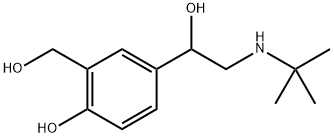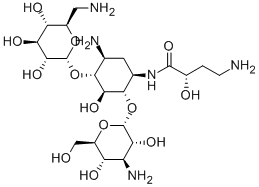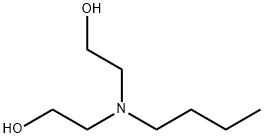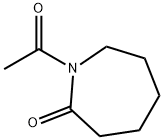N,N-Dimethylaminobutane
Synonym(s):N-Butyldimethylamine
- CAS NO.:927-62-8
- Empirical Formula: C6H15N
- Molecular Weight: 101.19
- MDL number: MFCD00043838
- EINECS: 213-156-1
- SAFETY DATA SHEET (SDS)
- Update Date: 2025-09-25 17:15:13

What is N,N-Dimethylaminobutane?
Chemical properties
colourless liquid
The Uses of N,N-Dimethylaminobutane
N,N-Dimethylbutylamine is suitable for use in the fabrication of polystyrene-based nano-LC monolithic columns for the separation of protein molecules. It may be used as ion-pairing reagent in a study involving comparison of performance of six ion-pairing reagents as mobile phase modifiers for oligonucleotide LC/MS.
The Uses of N,N-Dimethylaminobutane
Dimethylbutylamine is used as a chemical intermediate.
The Uses of N,N-Dimethylaminobutane
N,N-Dimethylbutylamine (cas# 927-62-8) is in preparation of high-density rigid flame-retardant polyimide foam material.
What are the applications of Application
N,N-Dimethylbutylamine is an amine building block
Definition
ChEBI: A tertiary amine consisting of n-butane having a dimethylamino substituent at the 1-position.
Synthesis Reference(s)
Journal of the American Chemical Society, 106, p. 7122, 1984 DOI: 10.1021/ja00335a042
General Description
A clear liquid with an ammonia-like odor. Flash point 20°F. Boiling point 201°F. Density 0.72 g / cm3. Ingestion may irritate or burn the mouth, throat, esophagus and stomach. May cause nausea, vomiting and diarrhea. Inhalation of vapors may irritate the respiratory system and cause pulmonary edema. Contact with the skin may cause burns. Eye contact may cause corrosion to the eyes and contact with the vapor may temporarily blur vision. Vapors heavier than air and may travel considerable distance to a source of ignition and flash back.
Air & Water Reactions
Highly flammable. Partially soluble in water.
Reactivity Profile
N,N-DIMETHYL-N-BUTYLAMINE neutralizes acids in exothermic reactions to form salts plus water. May be incompatible with isocyanates, halogenated organics, peroxides, phenols (acidic), epoxides, anhydrides, and acid halides. Flammable gaseous hydrogen may be generated in combination with strong reducing agents, such as hydrides.
Hazard
Moderately toxic by ingestion. Low toxic- ity by inhalation and skin contact. A moderate eye irritant.
Health Hazard
May cause toxic effects if inhaled or ingested/swallowed. Contact with substance may cause severe burns to skin and eyes. Fire will produce irritating, corrosive and/or toxic gases. Vapors may cause dizziness or suffocation. Runoff from fire control or dilution water may cause pollution.
Fire Hazard
Flammable/combustible material. May be ignited by heat, sparks or flames. Vapors may form explosive mixtures with air. Vapors may travel to source of ignition and flash back. Most vapors are heavier than air. They will spread along ground and collect in low or confined areas (sewers, basements, tanks). Vapor explosion hazard indoors, outdoors or in sewers. Runoff to sewer may create fire or explosion hazard. Containers may explode when heated. Many liquids are lighter than water.
Flammability and Explosibility
Non flammable
Properties of N,N-Dimethylaminobutane
| Melting point: | -60 °C |
| Boiling point: | 93.3 °C750 mm Hg(lit.) |
| Density | 0.721 g/mL at 25 °C(lit.) |
| vapor pressure | 67hPa at 20℃ |
| refractive index | n |
| Flash point: | 25 °F |
| form | clear liquid |
| pka | 9.83±0.28(Predicted) |
| color | Colorless to Almost colorless |
| Odor | ammonia-like odor |
| Water Solubility | 3.4 g/100 mL (20 ºC) |
| Stability: | Stable. Incompatible with strong oxidizing agents, strong acids. Highly flammable - note low flashpoint. |
| CAS DataBase Reference | 927-62-8(CAS DataBase Reference) |
| NIST Chemistry Reference | 1-Butanamine, N,N-dimethyl-(927-62-8) |
| EPA Substance Registry System | N,N-Dimethylbutylamine (927-62-8) |
Safety information for N,N-Dimethylaminobutane
| Signal word | Danger |
| Pictogram(s) |
 Flame Flammables GHS02  Corrosion Corrosives GHS05  Skull and Crossbones Acute Toxicity GHS06 |
| GHS Hazard Statements |
H225:Flammable liquids H301:Acute toxicity,oral H314:Skin corrosion/irritation H330:Acute toxicity,inhalation |
| Precautionary Statement Codes |
P210:Keep away from heat/sparks/open flames/hot surfaces. — No smoking. P260:Do not breathe dust/fume/gas/mist/vapours/spray. P280:Wear protective gloves/protective clothing/eye protection/face protection. P284:Wear respiratory protection. P301+P310:IF SWALLOWED: Immediately call a POISON CENTER or doctor/physician. P305+P351+P338:IF IN EYES: Rinse cautiously with water for several minutes. Remove contact lenses, if present and easy to do. Continuerinsing. |
Computed Descriptors for N,N-Dimethylaminobutane
N,N-Dimethylaminobutane manufacturer
New Products
Indole Methyl Resin tert-butyl 9-methoxy-3-azaspiro[5.5]undecane-3-carboxylate Boc-His(Boc)-OH 2-CTC Resin 4-Chloro-7-tosy1-7Hpyrrolo[2,3-d]pyrimidine 5,7-Dibromo-1H-indole 2,5-dichloro-N-hydroxy-4,6-dimethylpyridine-3-carboximidamide 2,2-Dimethoxy-7-azaspiro[3.5]nonane hydrochloride 4-chloromethyl-5-methyl-1,3-dioxol-2-one (DMDO-Cl) R-2-BENZYLOXY PROPIONIC ACID 1,1’-CARBONYLDIIMIDAZOLE 1,1’-CARBONYLDI (1,2-4 TRIAZOLE) N-METHYL INDAZOLE-3-CARBOXYLIC ACID 4-((2-hydroxyethyl)thio)benzoic acid 1-(TERT-BUTOXYCARBONYL)-2-PYRROLIDINONE Methyl 6-methylnicotinate 3-Pyridineacrylic acid tert-Butyl carbazate TETRAHYDRO-2H-PYRAN-3-OL 2-((4-morpholinophenylamino) (methylthio) methylene) malononitrile 3-(4-morpholinophenylamino)-5-amino-1H-pyrazole-4-carbonitrile 2,4-dihydroxybenzaldehyde 1,3-Diethyl-1,3-Diphenylurea Methyl 2-methylquinoline-6-carboxylateRelated products of tetrahydrofuran








You may like
-
 927-62-8 Dimethylbutylamine 99%View Details
927-62-8 Dimethylbutylamine 99%View Details
927-62-8 -
 N,N-dimethylbutylamine 98%View Details
N,N-dimethylbutylamine 98%View Details -
 N-Butyldimethylamine CAS 927-62-8View Details
N-Butyldimethylamine CAS 927-62-8View Details
927-62-8 -
 Pyridine 99.5% HPLC /UV SpectroscopyView Details
Pyridine 99.5% HPLC /UV SpectroscopyView Details
110-86-1 -
 Piperazine Spot supply, best priceView Details
Piperazine Spot supply, best priceView Details
110-85-0 -
 Dibutyl PhthalateView Details
Dibutyl PhthalateView Details
84-74-2 -
 Imidazole Spot supply, competitive priceView Details
Imidazole Spot supply, competitive priceView Details
288-32-4 -
 Thiourea 99% ARView Details
Thiourea 99% ARView Details
62-56-6
